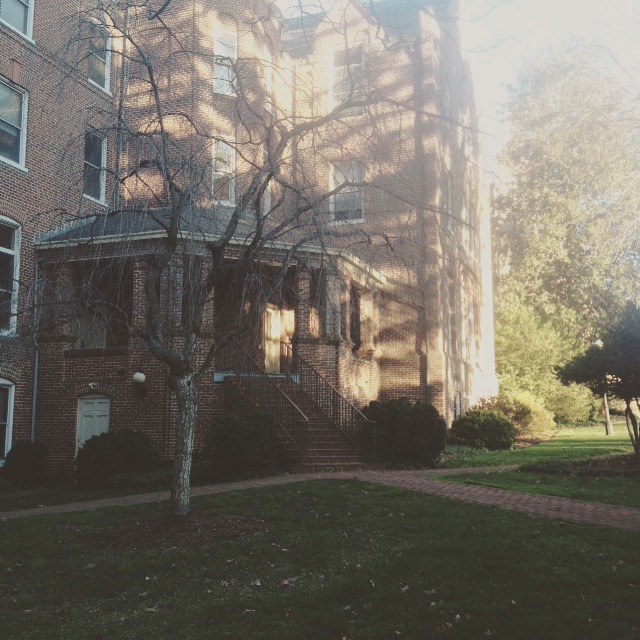Back in the fall of 2011 when I was a first-year at a small liberal arts college in the foothills of the Blue Ridge Mountains, I read the following passage from author Frances Mayes‘s (of “Under the Tuscan Sun” fame) meditative instruction manual, memoir and field guide, “The Discovery of Poetry”:
When I went to college in Virginia, hundreds of miles north of my Georgia hometown, I was used to Deep South seasons, a subtle blend of spring into summer into fall. That first autumn startled me. The whole landscape along the James River transformed, especially the ginkgo trees, which turned gold and suddenly, all on the same day, rained their fan-shaped leaves in circles around their trunks. I observed this with no accurate words to describe my astonishment. When spring came, the enormous old weeping cherry outside my dorm bloomed as though it had invented the word. To stand under a blossoming cherry and look up through transparent petals at the sky! I was taking a poetry class. Leafing through the textbook, I came across A. E. Housman‘s poem:
LOVELIEST OF TREES
Loveliest of trees, the cherry now
Is hung with bloom along the bough,
And stands about the woodland ride
Wearing white for Eastertide.Now, of my threescore years and ten,
Twenty will not come again,
And take from seventy springs a score,
It only leaves me fifty more.And since to look at things in bloom
Fifty springs are little room,
About the woodlands I will go
To see the cherry hung with snow.I read the poem out loud until I knew it by heart. I liked the soft-spoken sound of the words; their lightness seemed to suit the tree. I was struck by the knowledge that I had spent nineteen years without seeing a cherry tree in bloom. Poems can change an experience by imaginatively naming or extending a feeling or thought. “Loveliest of Trees” connected, giving me perceptions in addition to my own. A friend and I copied the poem and tacked it to the tree. Every day we saw people stop to read the poem and look up at the sky through the blossoms.
As a blossoming poet and life-long word-nerd, I immediately felt understood as well as electrified by Mayes’ action of tacking a poem to a blossoming tree. Imagine, then, my own indescribable astonishment when I discovered that the college in Virginia that Mayes attended was, in fact, the same college I was attending — that the tree she had tacked the poem to was a tree I might have just walked by on my way to my own dorm, a tree in my own immediate periphery that I could visit for myself and tack my own choice of poems on once spring arrived and bloomed!!! I am still, all these years later, grateful for and astonished by the universe blessing me in this sublime and affirming way.

Though the old weeping cherry Mayes mentions may have been cut down between my time and hers, the tradition of hanging poems from a blossoming tree every spring persisted, and I was able to continue this astonishing tradition on the branches of a spry weeping birch, pictured above. Which brings me to this spring, in this place, when the trees are starting to blossom in a different yet reminiscent landscape — Missouri has its own share of rivered land giving way to foothills, knobs and balds, after all.
This April, in celebration of National Poetry Month and in honor of that early discovery of poetry’s elemental and connective power, I’ll be re-creating the tradition of the poetry tree, or the poet-tree, in the Children’s Area at the Columbia Public Library. While we won’t quite be able to host a tree inside, we’ll have poems printed on little cards in a basket or two on the tiered display in front of the Children’s Desk, ready for you and your loved ones to take home and tack or hang up wherever feels right: on the fridge, on a nightstand, potentially on a tree or bush in the yard.
If you can’t make it in to the Columbia branch this month, don’t worry! I’ve got a PDF of Poet-Tree Offerings ready for you to print and cut out at home. And you can always check out one of the many, many, many poetry titles we have in our collection, which we will also be highlighting this month on the tiered display.
Happy spring, happy April, happy National Poetry Month! I’m wishing a little — hey, maybe even a lot! — blossoming affirmation and astonishment for us all, however we can find it. 🌸💌




